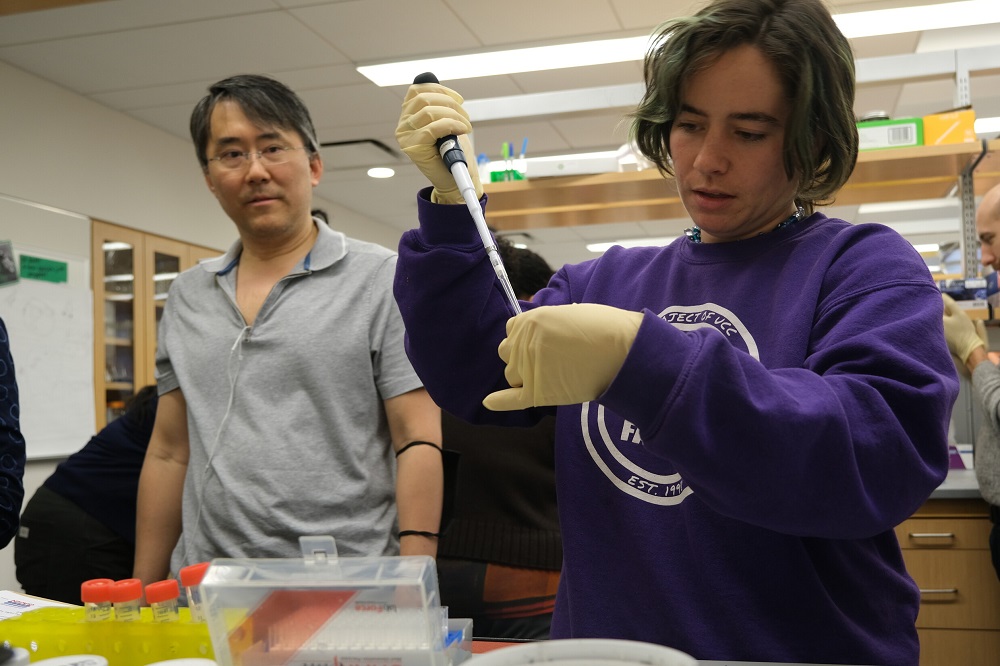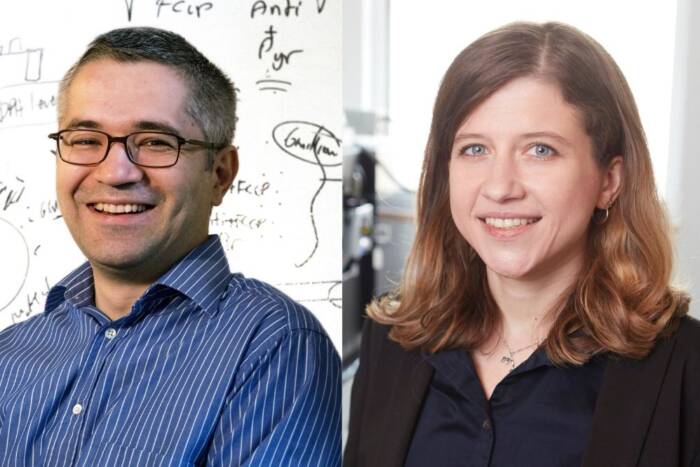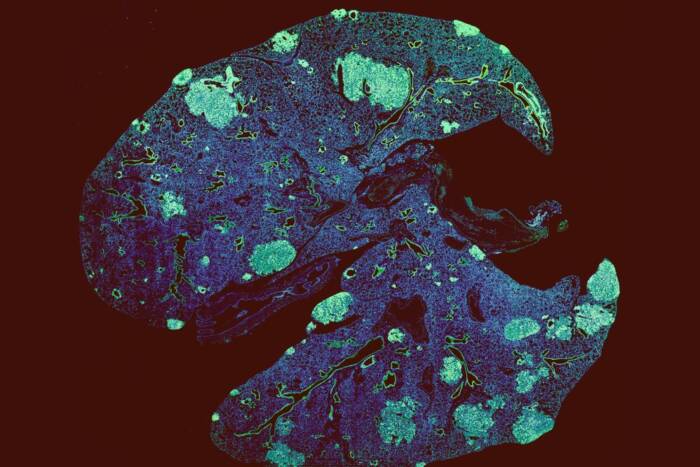Rockefeller community symposium brings together scientists and local gardeners

Sarah Feigelman, from East New York Farms, prepares a prepares a sample for environmental DNA analysis alongside J. Chuang of the Leibler lab. A cadre of volunteers from the Rockefeller community helped guide gardeners during experimental soil analysis.
On May 2, gardeners from around New York City converged on the Rockefeller campus to get their hands dirty in the name of science. Toting along all manner of jars and baggies brimming with local soil, their aim was to analyze earth sampled from community gardens across four of the five boroughs and hear from speakers specializing in urban sustainability and environmental justice.
The event, “Finding the ground truth: What does soil mean to a city?” was organized by Karl Palmquist, a recent graduate from Laboratory of Morphogenesis. When he isn’t conducting research in systems biology as a visiting fellow at Rockefeller and a member of the Institute for Advanced Study, Palmquist volunteers as the elected Chairperson for the NYC Sierra Club, a grassroots environmental organization. His was one of 19 community-building programs sponsored by an inaugural microgrant program in Rockefeller’s Office for Diversity, Equity, and Inclusion (ODEI).
“In New York City, certain communities have less access to healthy soils and the benefits they provide,” says Palmquist. “It’s undoubtedly a DEI issue.”
Community gardens can help buffer increasingly extreme weather patterns, as green spaces absorb runoff, and help provide nutritious foods in affected areas. The goal of the program, Palmquist adds, was to “open our gates and directly engage the communities affected the most.”
The morning session kicked off with a talk by S. Perl Egendorf, a researcher with the NYC Compost Project hosted by Earth Matter, who discussed how urban soils can promote food and climate justice. Next up Kwesi Joseph, an urban gardens specialist with Cornell Cooperative Extension’s Harvest New York, explained how rock dust can help replenish micronutrients depleted from urban soils; and Raymond Figueroa Jr., president of the New York City Community Garden Coalition, spoke about the sociopolitical history of community gardens. Today’s environmental justice issues stem from the 1960s and 70s, Figueroa noted, when racial discrimination in housing decimated communities of color across the city and their access to green spaces.
Later, participants traded in their trowels for pipettes in the RockEDU laboratory. They sifted out debris, then followed a precise protocol for uncovering environmental DNA, known as eDNA—scraps of genetic debris that can reveal the biodiversity of fungi and bacteria within the soil. The day concluded with a panel discussion about urban agriculture as a driver of social change which was hosted by Qiana Mickie, executive director of the New York City Mayor’s Office of Urban Agriculture, and featured Raymond Figueroa Jr., Iyeshima Harris-Ouedraogo, Sheryll Durrant, Che’Von Cooper, and Journei Bimwala.
A systems biologist whose thesis project focused on uncovering how cells in connective tissue self-organize during development, Palmquist sees soil as another complex system with a plethora of interdependent components. While he was a graduate student, Palmquist developed a research program to study soil in NYC with the assistance of RockEDU’s Jeanne Garbarino during a summer research program for high school students. Building on this experience, Palmquist went on to use the DEI microgrant as an opportunity to apply the systems biology framework of his academic research to an environmental-justice problem.
“We have a role to play here at Rockefeller interacting with the gardeners and farmers, as well as providing opportunities to make the scientific process itself accessible,” says Palmquist, who hopes this is the first of many Rockefeller events where communities and scientists can collaborate from the ground up.


